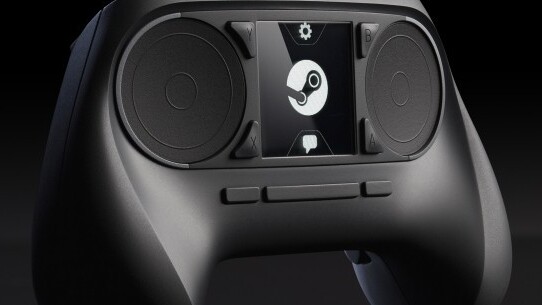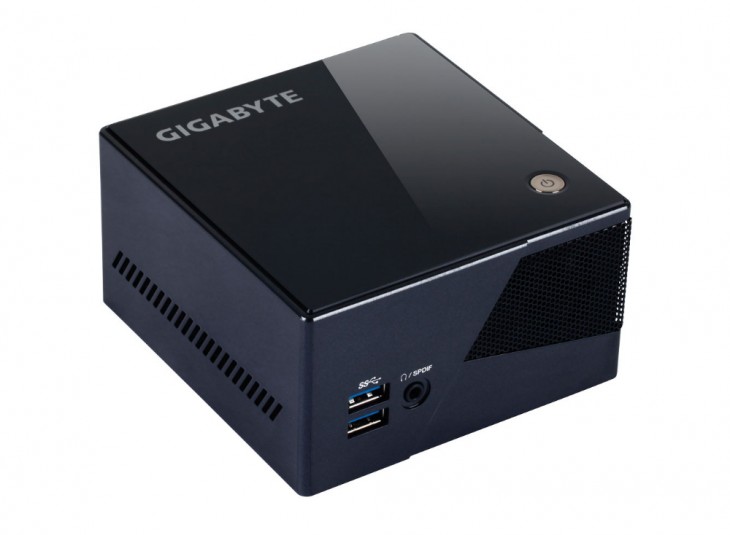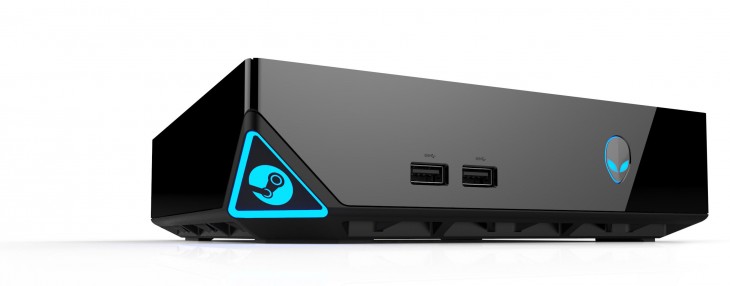
At its CES press conference, Valve announced 13 Steam Machine partners, including Alienware, Digital Storm and Falcon Northwest. As expected, the first wave of hardware offers a variety of specs and price-points to appeal to almost every type of video game enthusiast.
As I scanned through the brochure for these new Valve-approved gaming PCs, I felt a pang of disappointment though. They all had wildly different designs, but none of them were particularly appealing.
In fact, most of the new Steam Machines were pretty ugly.
That could be a huge problem. Steam is a popular platform for PC gamers and Steam OS, the Linux-based operating system that ships with every Steam Machine, can already be replicated to a large extent with Big Picture mode. Anyone can hook their gaming PC up to their TV and begin accessing their Steam catalog this way.
It’s not as simple as connecting a PlayStation 4 or Xbox One, but it’s possible.
Many people don’t do this, however, because traditional gaming rigs look unsightly in the living room. They’re often large, cumbersome towers littered with vents, fans and glowing lights. They’re difficult to fit into a media center and unattractive to the average consumer.
Missing the point
Steam Machines were conceived to tackle this problem, by repackaging the Steam client with a software and hardware experience that would appeal to the mass market. Furthermore, it’s important that manufacturers design these boxes to be as compact and attractive as possible.
They don’t need to mimic the console designs by Sony, Microsoft and Nintendo, but they should be approachable and familiar. Otherwise, they simply won’t appeal to console owners and parents – the very market Valve is trying to capture with Steam OS.
Most of the Steam Machines that have been unveiled at CES were underwhelming. Some resembled traditional gaming PCs, which is fine for existing Steam players, but many of the smaller ones were garish and uninspired. The Alternate and Gigabyte Brix Pro, for instance, are essentially black cubes with the usual medley of grilles and ports slapped on their sides.
Hardware design appears to have been an afterthought. That can be forgiven in PC gaming, because most people hide their tower under a desk and prioritize performance above everything else. For the living room, however, it’s important that Valve’s partners build Steam Machines that are beautiful and well-designed.
It’s not all bad news. Alienware unveiled a sleek little Steam Machine yesterday, with a subtle blue glow around its logo and the Steam emblem on the front. It’s not exceptional, but it’s far beyond any of the other Steam OS-powered gaming consoles that we’ve seen so far.
A Steam Machine by Valve?
Many are still wondering whether Valve will develop and release its own Steam Machine. At the press conference yesterday, Valve CEO Gabe Newell certainly didn’t rule it out: “We’ll continue to make that decision as we go along.”
With so many other Steam Machines in the pipeline, why are players still clamouring for a Valve-developed gaming console? It’s all about the execution.
The Steam Machines unveiled yesterday were uninspired and forgettable. Furthermore, I get the sense that many video game enthusiasts are still waiting for a standout piece of Steam OS hardware. A powerful, innovative and well-designed gaming console that can truly compete with the PlayStation 4 and Xbox One. The mythical ‘Steam Box’ that everyone had hoped for.
Read Next: The biggest challenges facing Steam Machines and how Valve can overcome them
Get the TNW newsletter
Get the most important tech news in your inbox each week.







